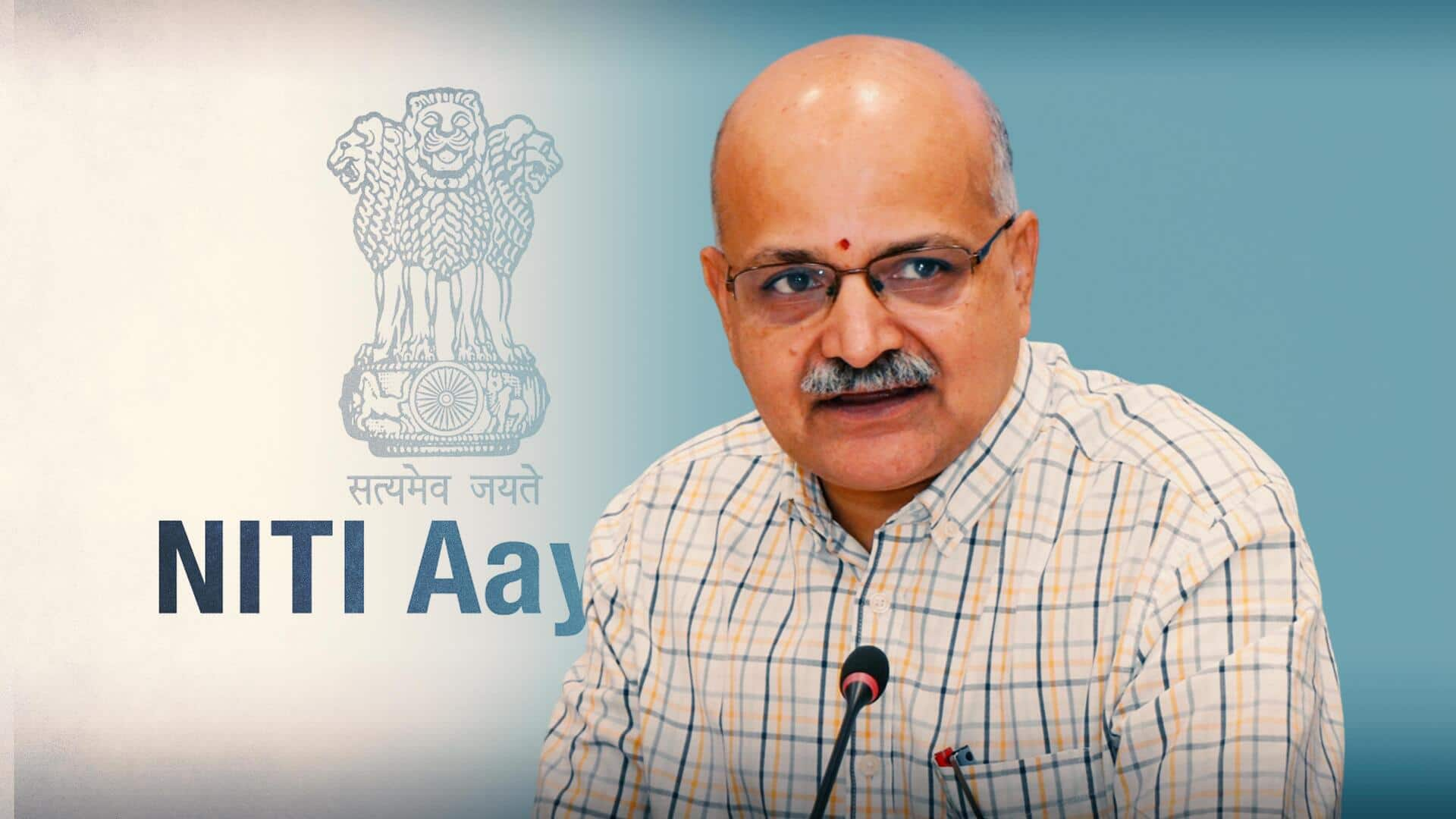
Below 5% Indians living in absolute poverty: NITI Aayog CEO
What's the story
Less than 5% of Indians now live in absolute poverty, NITI Aayog CEO BVR Subrahmanyam has said, citing the Household Consumption Expenditure Survey (HCES) for 2022-23. But he added this does not mean people in India are well off now. "It means those living in absolute destitution are less than 5%," Subrahmanyam told News18. The HCES, undertaken from August 2022 to July 2023, offers insights into poverty rates, household consumption patterns, and the efficacy of the government's poverty alleviation initiatives.
Context
Why does this story matter?
The survey report comes months ahead of the Lok Sabha elections in April-May. Earlier, the NITI Aayog said that 24.82 crore people have escaped multidimensional poverty in the past nine years. The government's discussion paper "Multidimensional Poverty in India since 2005-06" attributes this progress to various schemes and initiatives. These include "Poshan Abhiyan" and "Anaemia Mukt Bharat," which have improved access to healthcare, reducing deprivation significantly between 2013-14 and 2022-23.
Data decoded
Survey indicates reduction in poverty: Subrahmanyam
The survey showed that the bottom 5% of the population spends Rs. 1,441 per month in rural areas and Rs. 2,087 in urban areas. Subrahmanyam said, "There was an old report of the Tendulkar committee (on poverty)... If we extrapolate it with the data of this survey...(it) shows...India has less than 5% poor remaining." The Tendulkar committee, formed in 2005 by the Planning Commission (now NITI Aayog), pegged rural poverty headcount at 41.8% and urban poverty at 25.7% for 2004-05.
Income and consumption
Survey says rural India catching up with urban
The survey also found that rural India is closing the gap with urban areas in terms of income and consumption. While urban incomes have grown 2.5 times, rural incomes have increased 2.6 times. The difference between rural and urban consumption has decreased from 84% in 2011-12 to 71%. Subrahmanyam credited this change to "the assets of rural households and the major infrastructure push" and the government's focus on the saturation of schemes.
NITI Aayog report
Shift in spending patterns
According to the NITI Aayog's report, Indians are spending less on cereals and overall food, with cereal consumption dropping below 5% in rural India and below 4% in urban areas. Instead, people are spending more on non-food items like aerated drinks. For the first time, rural areas have spent less than 50% on food, while urban Indians have spent less than 40%. The report also highlighted increased spending on transportation and durable goods like public transport services and appliances.
HCES report
HCES results shared after 11 years
For the first time in around 11 years, the government has released the results of the HCES. This data will be pivotal in reassessing vital economic metrics such as gross domestic product (GDP), poverty rates, and consumer price index (CPI). To note, the study was carried out by the National Sample Survey Office (NSSO) under the Ministry of Statistics and Programme Implementation.